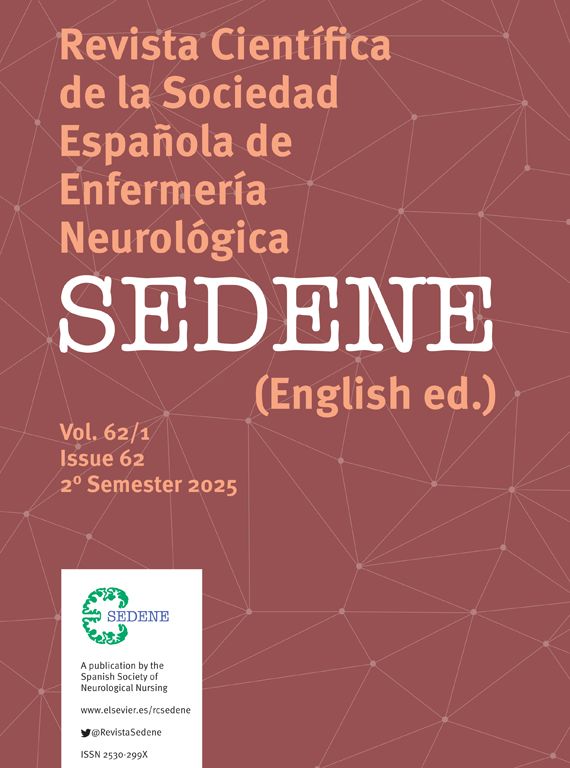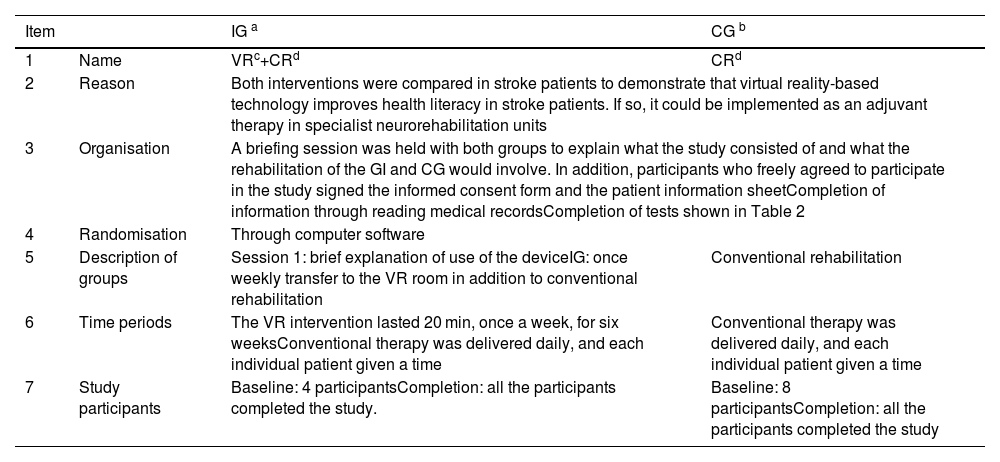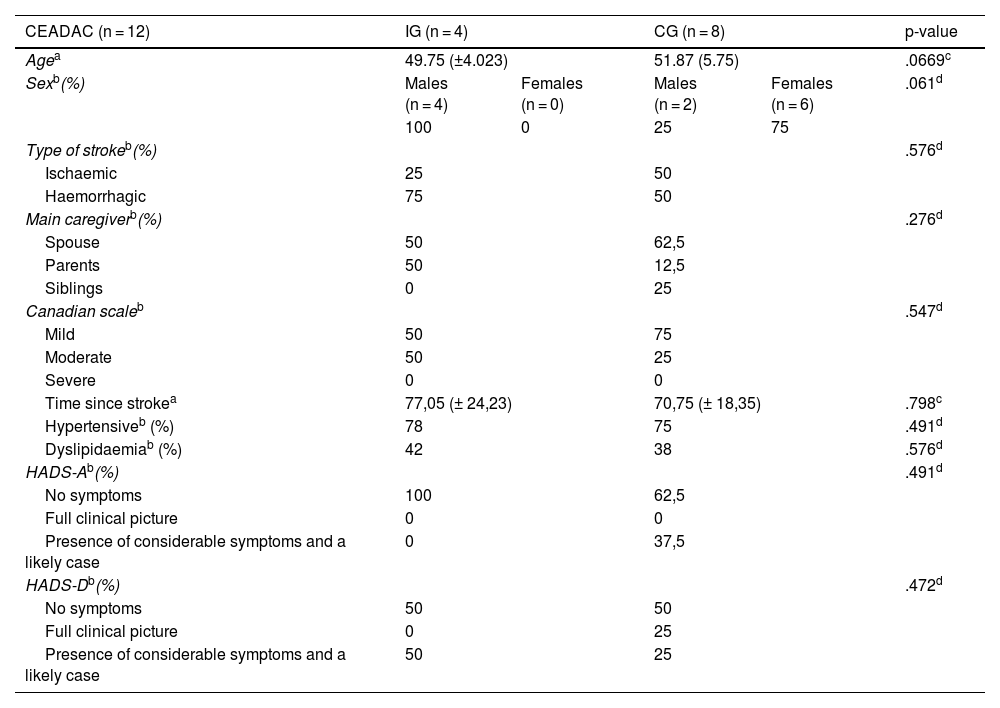To evaluate the effectiveness of virtual reality on the degree of Health Literacy, before and after the use of virtual reality with the Nintento Switch® device in patients with a diagnosis of stroke admitted to neurorehabilitation units.
MethodologyTwelve patients admitted to a neurorehabilitation unit underwent a 1:3 randomised clinical trial (intervention group: control group). The intervention group consisted of 4 patients and the control group consisted of 8 patients. The control group performed conventional rehabilitation and the intervention group, in addition to conventional rehabilitation, had a 20-min virtual reality intervention once a week for 6 weeks. Clinical outcomes were measured for the literacy variable before the intervention and 6 weeks after the intervention in both the control group and the intervention group.
ResultsAn improvement in literacy was obtained in the control group (9 vs. 9.38; p = 0.18) and in the intervention group (13.75 vs. 14.25; p = 0.31) after the 6 weeks duration of the study. Comparing the intervention group and the control group, the literacy level of the intervention group was higher after the intervention than in the CG (14.25 vs. 9.38: p = 0.20), but no statistically significant results were obtained.
ConclusionVirtual reality used together with conventional treatment seems to improve the degree of literacy of stroke patients admitted to neurorehabilitation units.
Evaluar la efectividad de la realidad virtual en el grado de Alfabetización en Salud, antes y después del uso de la realidad virtual con el dispositivo Nintento Switch® en pacientes con diagnóstico de Ictus ingresados en unidades de neurorrehabilitación.
MetodologíaDoce pacientes ingresados en una unidad de neurorrehabilitación fueron sometidos a un ensayo clínico aleatorizado 1:3 (grupo intervención: grupo control). El grupo intervención estuvo formado por 4 pacientes y el grupo control por 8 pacientes. El grupo control realizó la rehabilitación convencional y el grupo intervención, además de la rehabilitación convencional, tuvo una intervención de 20 minutos de realidad virtual una vez a la semana durante 6 semanas. Se midieron los resultados clínicos para la variable alfabetización antes de la intervención y seis semanas después de la intervención, tanto en el grupo control, como en el grupo intervención.
ResultadosSe obtuvo una mejoría en el grado de alfabetización del grupo control (9 vs. 9,38; p = 0,18) y en el grupo intervención (13,75 vs. 14,25; p = 0,31) tras las 6 semanas de duración del estudio. Comparando el grupo intervención y el grupo control, el nivel de alfabetización del grupo intervención fue mayor tras la intervención que en el GC (14,25 vs. 9,38: p = 0,20), no se obtuvieron resultados estadísticamente significativos
ConclusiónLa realidad virtual utilizada junto con el tratamiento convencional, no parece mejorar el grado de alfabetización de los pacientes con ictus ingresados en unidades de neurorrehabilitación.
Article
Diríjase al área privada de socios de la web de la SEDENE, (https://sedene.com/revista-de-sedene/ ) y autentifíquese.








